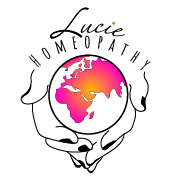THE BURDEN OF CELLULITE
Most of us women know of this ‘dimpled, orange peel’ like appearance on our skin from our teenage years. Mostly affected are buttocks, legs – back of the thighs but front is no exception.
It can also be visible on the upper arms, as well as abdomen/stomach area and even on/around the breasts!
Frankly, it is not a nice sight and can make us feel quite conscious of our bodies.
The few ‘lucky’ ones never have to worry about it, and the majority ‘battle’ with it on and off most their lives.
What is it and why does it affect about 90% of women?
It is a fat build up underneath the skin – the layer of the fat cells lies just below the surface of the skin, which is where the connective tissue is. The fat cells and connective tissue are arranged vertically. If the fat cells protrude into the layer of the skin, this gives the appearance of cellulite.
Interestingly in men, the tissue has a criss-cross structure, which might be why men are less likely to get have cellulite!
There are hereditary factors in play here as well, like in any ailment/disease, and so it very much depends on the individual – how the body distributes the fat and how fast the metabolism is which then determines whether the fat is being used or stored.
How come even slim people have cellulite?
This is where the science doesn’t really have the answers, apart from ‘blaming’ it on the genes. But genes only account for about 50% of the total influence, the rest is up to us…. The choices we make in regards to how we live our lives, the individual susceptibilities, our mental and emotional state… the list goes on.
But from my own experience I would put one of the reasons down to hormonal changes/imbalances. Specifically for women, we encounter our first hormonal change as teenagers, then during pregnancy and birth and finally at menopause.
Hormones like estrogen, insulin, thyroid hormone and prolactin are all part of the cellulite production process.
Also, impaired circulation can play role in the appearance of cellulitis, as it decreases the amount of collagen being produced (collagen is the most abundant protein in our bodies and it basically what holds us together – a very important building block).
The other important factor that plays a role here is how active the person is because cellulite can certainly be managed by a regular exercise as it strengthens the muscle and connective tissue.

With a holistic approach, looking at the person as a whole – their lifestyle as well as their inherited ‘susceptibilities’, their whole being can be supported and balanced with a remedy that is best fitting for the person at that point in time. It is not about looking at the one ailment but rather looking deeper, at what is causing this symptom and how can we break this pattern and prevent it from happening again.

